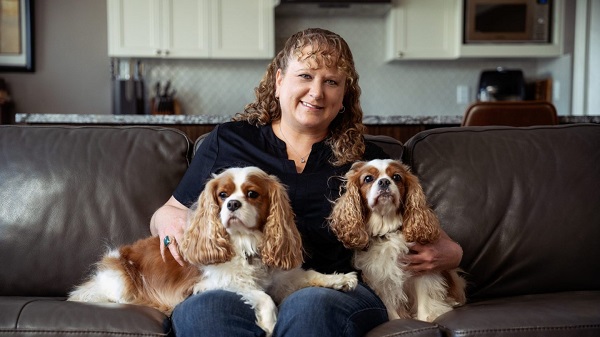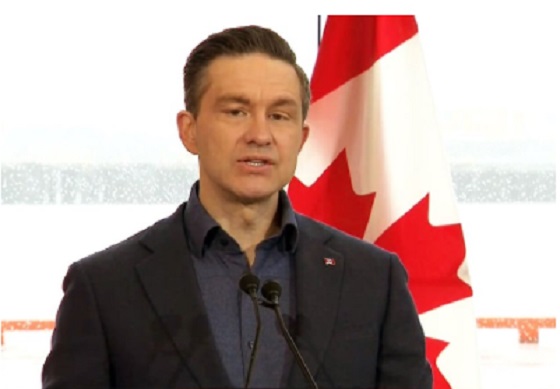Alberta
New children’s book demonstrates how the everyday world is connected to natural resources

From the Canadian Energy Centre
‘Today’s youth have the opportunity to lead us into the future with innovative solutions for environmental challenges’
After a 24-year career in oil sands land reclamation, author Tanya Richens is sharing her knowledge with young minds.
Her new book, From the Earth to Us: Discovering the Origins of Everyday Things, explores the relationship between natural resources and the things we use in everyday life, from computers and water bottles to batteries and solar panels.
“There is a gap in society’s understanding of where things come from. We are a society driven by consumerism and immediate gratification. We order something online, and it arrives on our doorstep the next day. We don’t stop to think about where it really came from or how it was made,” Richens says.
“There’s an ever-increasing societal position that mining is bad, and oil is even worse… But there’s a simple hypocrisy in those beliefs, since so many things in our lives are made from the raw materials that come from mining and oil and natural gas,” she says.
The book, illustrated by reclamation artist Shannon Carla King, follows young Hennessy Rose and her Cavalier King Charles Spaniel Riley on a trip to a children’s summer camp.
Hennessy’s mom is a guest speaker on the origin of everyday items and the relationship between humans and the earth. Through detailed explanations of items surrounding her, Hennessy’s mom teaches the kids how rocks, minerals, oil and gas from the earth are used to power and aid our lives, creating items such as building supplies, food and hair products, camping and sports equipment, and cell phones.
 Author Tanya Richens poses with her two books for children about natural resources. Photo for Canadian Energy Centre
Author Tanya Richens poses with her two books for children about natural resources. Photo for Canadian Energy Centre
“I thought a simple and fun book explaining the raw materials needed to make everyday items would be valuable for all ages,” Richens says.
“When people feel personally connected to natural resources, they are more likely to promote sustainable practices. Today’s youth will have the opportunity to lead us into the future with innovative solutions for environmental challenges.”
Richens‘ career began with Alberta Environment, where she was a coordinator of reclamation approvals in the oil sands. She oversaw technical reviews of oil sands reclamation applications, communicated with statement of concern filers, coordinated public hearings and provided support for legislative changes.
She moved from government to Suncor Energy, ensuring the company’s compliance on reclamation projects and led initiatives to obtain reclamation certificates. She now works as an independent consultant.
Drawing on her wealth of experience in the field, Richens’ first book, Adventures in Land Reclamation: Exploring Jobs for a Greener Future, seeks to excite kids aged 9-12 years about jobs related to the environment and land reclamation.
Hoping to get From the Earth to Us into the hands of teachers, Richens is heading to the Edmonton Teachers Convention in late February. She says the book supports multiple learning outcomes in Alberta’s new science curriculum for grades 3, 4, 5 and 6.
“Ultimately, I’d like people to understand and acknowledge their individual part in the need for mining and oil and natural gas development. Until the naivety and hypocrisy in the world is addressed, I’m not sure that real environmental change is possible.”
Richens’ books can be purchased on her website at tcrenvironmental.com.
Alberta
Alberta takes big step towards shorter wait times and higher quality health care

From the Fraser Institute
On Monday, the Smith government announced that beginning next year it will change the way it funds surgeries in Alberta. This is a big step towards unlocking the ability of Alberta’s health-care system to provide more, better and faster services for the same or possibly fewer dollars.
To understand the significance of this change, you must understand the consequences of the current (and outdated) approach.
Currently, the Alberta government pays a lump sum of money to hospitals each year. Consequently, hospitals perceive patients as a drain on their budgets. From the hospital’s perspective, there’s little financial incentive to serve more patients, operate more efficiently and provide superior quality services.
Consider what would happen if your local grocery store received a giant bag of money each year to feed people. The number of items would quickly decline to whatever was most convenient for the store to provide. (Have a favourite cereal? Too bad.) Store hours would become less convenient for customers, alongside a general decline in overall service. This type of grocery store, like an Alberta hospital, is actually financially better off (that is, it saves money) if you go elsewhere.
The Smith government plans to flip this entire system on its head, to the benefit of patients and taxpayers. Instead of handing out bags of money each year to providers, the new system—known as “activity-based funding”—will pay health-care providers for each patient they treat, based on the patient’s particular condition and important factors that may add complexity or cost to their care.
This turns patients from a drain on budgets into a source of additional revenue. The result, as has been demonstrated in other universal health-care systems worldwide, is more services delivered using existing health-care infrastructure, lower wait times, improved quality of care, improved access to medical technologies, and less waste.
In other words, Albertans will receive far better value from their health-care system, which is currently among the most expensive in the world. And relief can’t come soon enough—for example, last year in Alberta the median wait time for orthopedic surgeries including hip and knee replacements was 66.8 weeks.
The naysayers argue this approach will undermine the province’s universal system and hurt patients. But by allowing a spectrum of providers to compete for the delivery of quality care, Alberta will follow the lead of other more successful universal health-care systems in countries such as Australia, Germany, the Netherlands and Switzerland and create greater accountability for hospitals and other health-care providers. Taxpayers will get a much better picture of what they’re paying for and how much they pay.
Again, Alberta is not exploring an untested policy. Almost every other developed country with universal health care uses some form of “activity-based funding” for hospital and surgical care. And remember, we already spend more on health care than our counterparts in nearly all of these countries yet endure longer wait times and poorer access to services generally, in part because of how we pay for surgical care.
While the devil is always in the details, and while it’s still possible for the Alberta government to get this wrong, Monday’s announcement is a big step in the right direction. A funding model that puts patients first will get Albertans more of the high-quality health care they already pay for in a timelier fashion. And provide to other provinces an example of bold health-care reform.
Alberta
Alberta’s embrace of activity-based funding is great news for patients

 From the Montreal Economic Institute
From the Montreal Economic Institute
Alberta’s move to fund acute care services through activity-based funding follows best practices internationally, points out an MEI researcher following an announcement made by Premier Danielle Smith earlier today.
“For too long, the way hospitals were funded in Alberta incentivized treating fewer patients, contributing to our long wait times,” explains Krystle Wittevrongel, director of research at the MEI. “International experience has shown that, with the proper funding models in place, health systems become more efficient to the benefit of patients.”
Currently, Alberta’s hospitals are financed under a system called “global budgeting.” This involves allocating a pre-set amount of funding to pay for a specific number of services based on previous years’ budgets.
Under the government’s newly proposed funding system, hospitals receive a fixed payment for each treatment delivered.
An Economic Note published by the MEI last year showed that Quebec’s gradual adoption of activity-based funding led to higher productivity and lower costs in the province’s health system.
Notably, the province observed that the per-procedure cost of MRIs fell by four per cent as the number of procedures performed increased by 22 per cent.
In the radiology and oncology sector, it observed productivity increases of 26 per cent while procedure costs decreased by seven per cent.
“Being able to perform more surgeries, at lower costs, and within shorter timelines is exactly what Alberta’s patients need, and Premier Smith understands that,” continued Mrs. Wittevrongel. “Today’s announcement is a good first step, and we look forward to seeing a successful roll-out once appropriate funding levels per procedure are set.”
The governments expects to roll-out this new funding model for select procedures starting in 2026.
* * *
The MEI is an independent public policy think tank with offices in Montreal, Ottawa, and Calgary. Through its publications, media appearances, and advisory services to policymakers, the MEI stimulates public policy debate and reforms based on sound economics and entrepreneurship.
-

 Bruce Dowbiggin2 days ago
Bruce Dowbiggin2 days agoBettman Gives Rogers Keys To The Empire. Nothing Will Change
-

 2025 Federal Election2 days ago
2025 Federal Election2 days agoPoilievre Will Bring in ‘One and Done’ Resource Approvals, and Ten Specific Projects Including LNG Canada Phase II
-

 conflict1 day ago
conflict1 day agoZelensky Alleges Chinese Nationals Fighting for Russia, Calls for Global Response
-

 2025 Federal Election1 day ago
2025 Federal Election1 day agoHarper Endorses Poilievre at Historic Edmonton Rally: “This Crisis Was Made in Canada”
-

 2025 Federal Election1 day ago
2025 Federal Election1 day agoMark Carney’s radical left-wing, globalist record proves he is Justin Trudeau 2.0
-

 2025 Federal Election2 days ago
2025 Federal Election2 days agoElection Security Briefing Confirms CCP-Linked Operation Boosted Carney
-

 2025 Federal Election1 day ago
2025 Federal Election1 day agoAn In-Depth Campaign Trail “Interview” With Pierre Poilievre
-

 Alberta16 hours ago
Alberta16 hours agoAlberta’s embrace of activity-based funding is great news for patients










